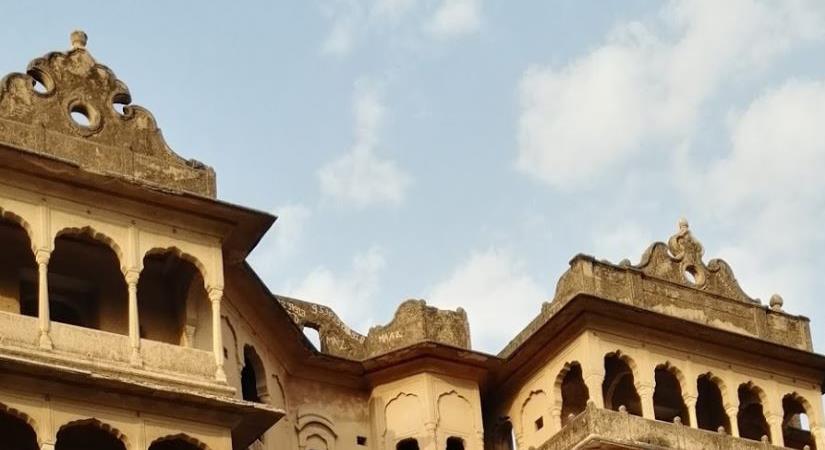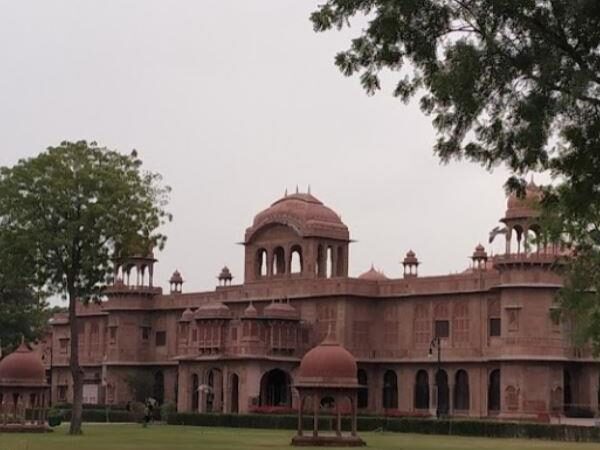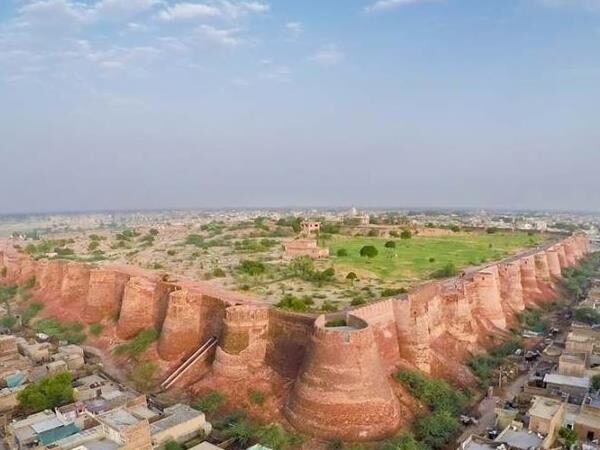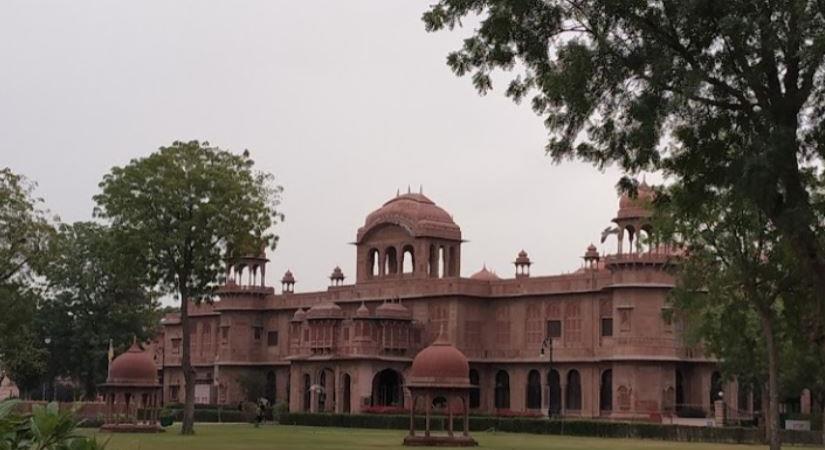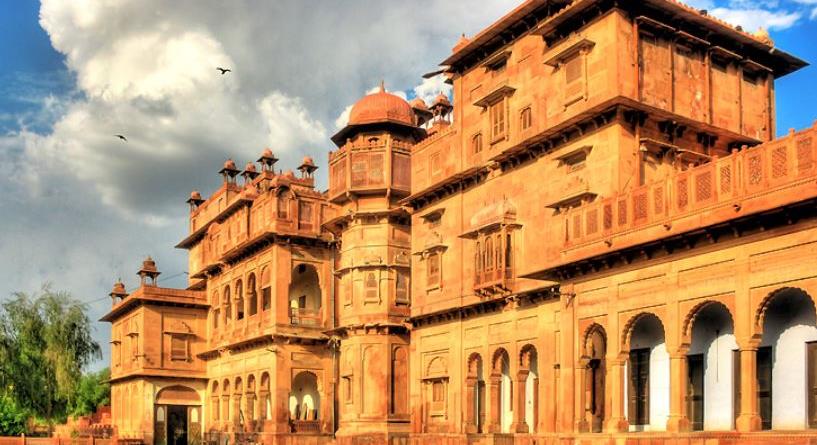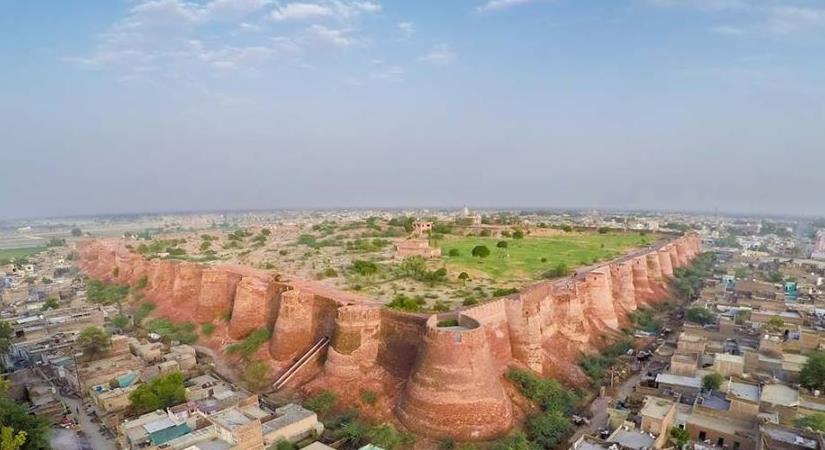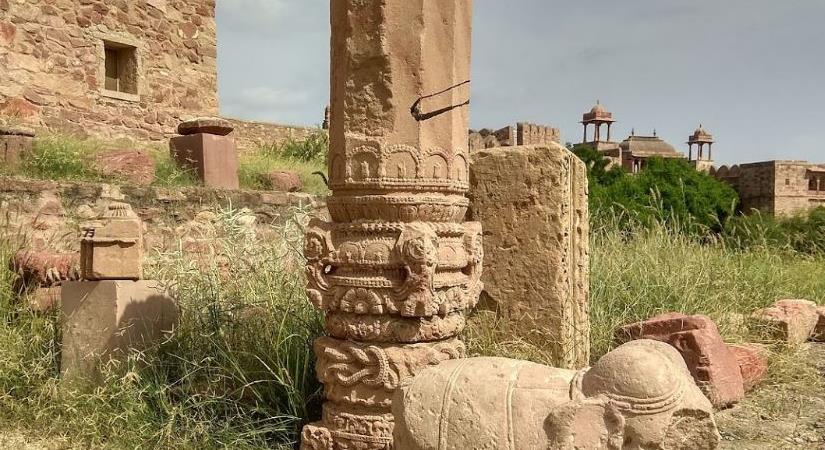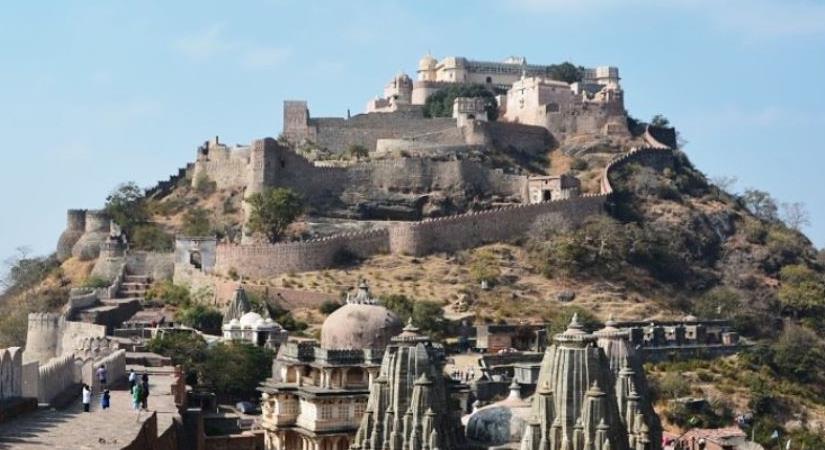Nestled amidst the lush greenery of Mundru Village in Sri Madhopur, Sikar, lies the charming fort of Mundru Garh, also known as Bheem Ki Katori. This fort was built on a single rock hillock and was once surrounded by a river, which gave it the appearance of a glittering gem on a ring. Although the fort is now in ruins, with only its outer walls standing, it still offers a tranquil escape into the past.
It is a perfect offbeat destination, to explore rural Rajasthan and a historic fort.
Take a stroll through history as you explore the fort’s small reservoir and the temple of Lord Hanuman, known as “Doongri Ka Balaji.” The temple is carved into the stone hill, and on the opposite side, you’ll find snakes etched into the surface. The hilltop offers breathtaking views of the surrounding natural beauty and a peaceful escape from the hustle and bustle of modern life.
Mundru village has a rich history that dates back to the 17th century. It was once the capital of the estate of the same name, founded by Raja Hridayram of Ranoli. The village was initially a jungle surrounded by two rivers and a large pond, and the fort was the centerpiece of the area. This region was once the head seat of the Hariramot Shekhawat dynasty, and several smaller fiefs or jagirs were established in nearby villages by the descendants of the dynasty.
Discover the rich cultural heritage of Mundru on your next adventure. Whether you’re a history buff, nature lover, or just seeking a peaceful escape, Mundru Garh is the perfect destination. So, pack your bags and get ready to immerse yourself in the history and beauty of this hidden gem!
While Raja Raisal was in the Deccan (Burhanpur), Madho Singh Ladkhani and other grandsons of his, out of boldness and evil intentions, collected a number of vagabonds and forcibly took possession of their grandfather’s property, which was called Khandela and was near Amber. Its Dewan, Mathura Das Bengali, who was upright and learned, and held charge of the Raja’s establishment, and was acting as the Raja’s deputy at the Court behaved with prudence, and rescued part of the property from the hands of the usurpers. His sons Raja Hariram, Raja Bhojraj and Rao Tirmal had got titles and Mansab during the lifetime of their father, while younger son Raja Girdhar who behaved loyally to the Emperor received the title of Raja after Raisal’s death.
It was the head seat of Hariramot Shekhawat dynasty whose other descendants established themselves at smaller fiefs or jagirs in nearby villages including Lisaria or Lasada, Abhawas, Kolwa, Bhomias, Bagariawas and Dhalyawas or Dhaliawas. Some of the jagirs of this clan were captured by collateral branches of Rajawats of Jaipur, Girdharji Ka Shekhawats of Khandela and Raoji Ka Shekhawats. Dadia and Jethi tracts slipped out of their control on being usurped by Girdharji Ka Shekhawats. Rao Daulat Singh of Sikar along with Rao Fateh Singh of Dujod and Rao Deep Singh of Kasli (great grandsons of Rao Tirmal), ousted a branch of the family of Hari Ramji Ka Shekhawats and took possession of Jagmalpura estate along with Chainpura and Dadi in late 17th Century. Rajkumari Sone Kanwar, Princess of Mundru, granddaughter of Hariramji was married to the heroic Thakur Sahibkhanji Champawat. While his daughter was married to Prince Bharmal of Kishangarh and gave birth to Maharaja Roop Singh who was killed by Aurangzeb in the battle of Samugarh (Dharmat).
